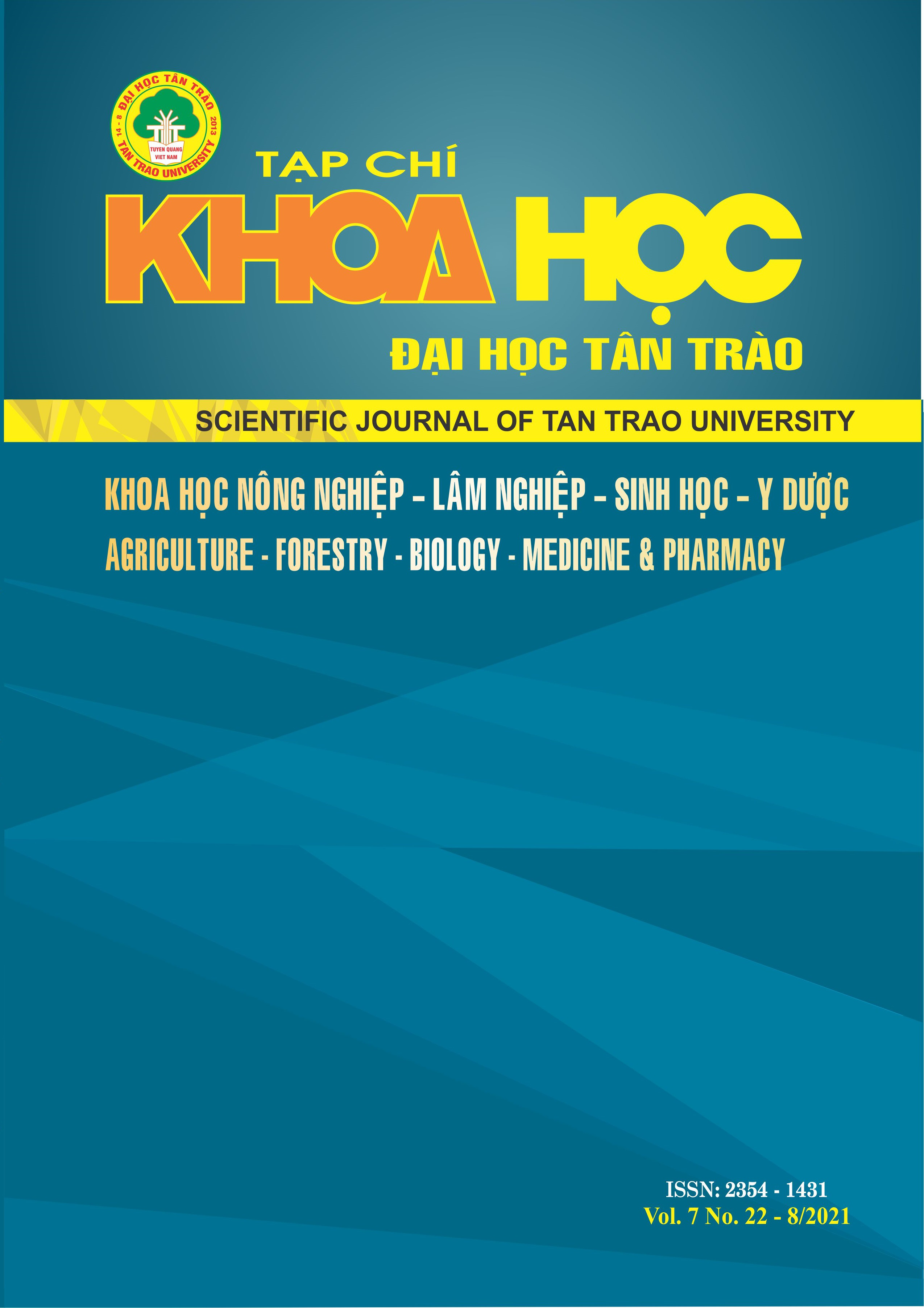CARE, NUTRITION, AND ROUNDATION PROCESS DISEASE TREATMENT IN RI LAI CHICKEN AT NGUYEN QUANG CHINH, TRUNG MON COMMUNE, YEN SON DISTRICT, TUYEN QUANG PROVINCE
DOI:
https://doi.org/10.51453/2354-1431/2021/471Keywords:
Crossbred Ri chicken, growth , nurturing, prevention and treatmentAbstract
This process is carried out on the chicken farm of Nguyen Quang Chinh househoid, Trung Mon commune, Yen Son district, Tuyen Quang province. Research results have shown that the survival rate of Crossbred Ri chicken is quite high, with good adaptability to local natural conditions. Body weight of Crossbred Ri chicken at birth was 33.03g/head; at 3 weeks old is 223.87 g/head, at 15 weeks old is 1807.62g/head. The average absolute growth rate for the whole period was 16.90 (g/head/day), relative growth was 26.09 (g/head/day). In the process of raising chickens infected with E.coli, coccidiosis, CRD, the highest rate of chickens infected with coccidiosis was 1.73%. When chickens are sick, use the drug after 5 days of symptoms of the disease in the disease in the chickens.
Downloads
References
[1] Lang, P. S., Thanh, T. L. (2006). Parasitic protozoa in domesstic. Hanoi Agricultural Publishing House, 138 – 142, Vietnam.
[2] Nam, L. V. (2004). Treatment guidelines for complex grafting diseases in chickens. Hanoi Agricultural Publishing House, Vietnam.
[3] Tung, H. X. (2008). Research on cross – breeding Luong Phuong Hoa and Ri chichens to select and breed free – range chickens for farming. Doctoral thesis in agricultural. Viet Nam Academy of Science and Technology, Vietnam
[4] Van, T T., Hoan, N. D., My, N. T. T. (2015). Curriculum on poultry farming. Hanoi Agricultural Publishing House, 234, Vietnam.
[5] Livestock resources in Viet Nam (2020). Livestock situation in the whole country in December 2019, Vietnam.
Downloads
Published
How to Cite
Issue
Section
License

This work is licensed under a Creative Commons Attribution-ShareAlike 4.0 International License.
All articles published in SJTTU are licensed under a Creative Commons Attribution-ShareAlike 4.0 International (CC BY-SA) license. This means anyone is free to copy, transform, or redistribute articles for any lawful purpose in any medium, provided they give appropriate attribution to the original author(s) and SJTTU, link to the license, indicate if changes were made, and redistribute any derivative work under the same license.
Copyright on articles is retained by the respective author(s), without restrictions. A non-exclusive license is granted to SJTTU to publish the article and identify itself as its original publisher, along with the commercial right to include the article in a hardcopy issue for sale to libraries and individuals.
Although the conditions of the CC BY-SA license don't apply to authors (as the copyright holder of your article, you have no restrictions on your rights), by submitting to SJTTU, authors recognize the rights of readers, and must grant any third party the right to use their article to the extent provided by the license.


